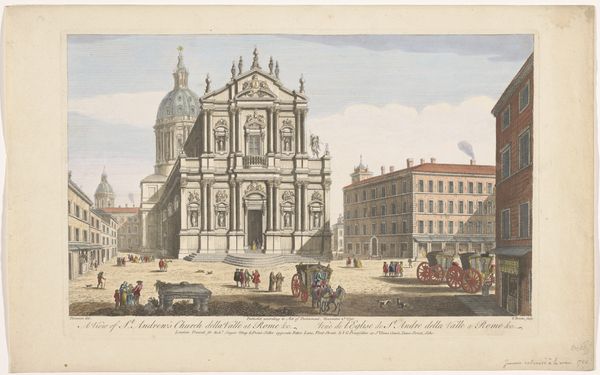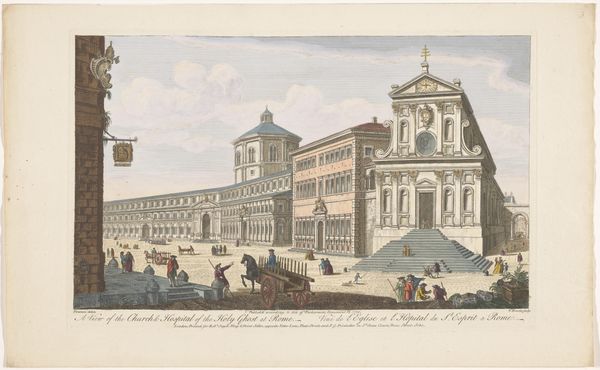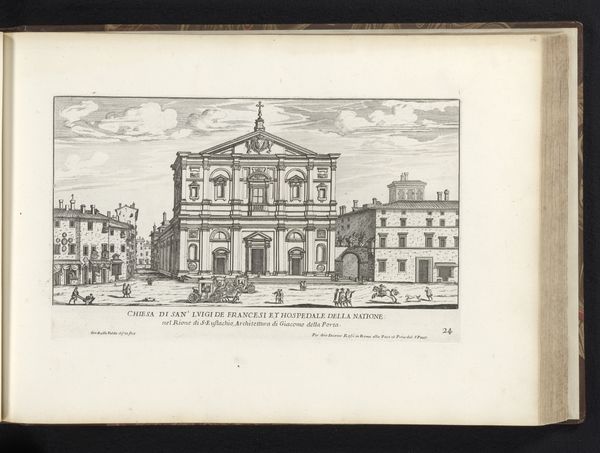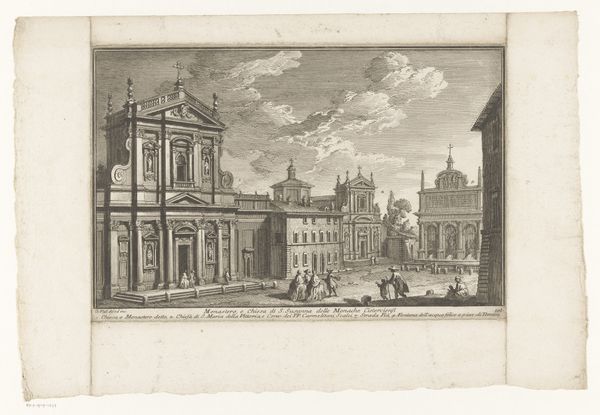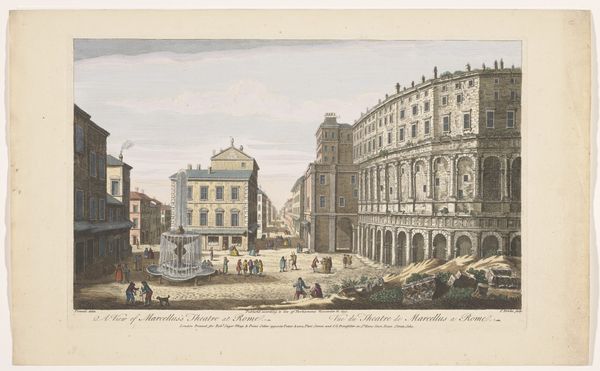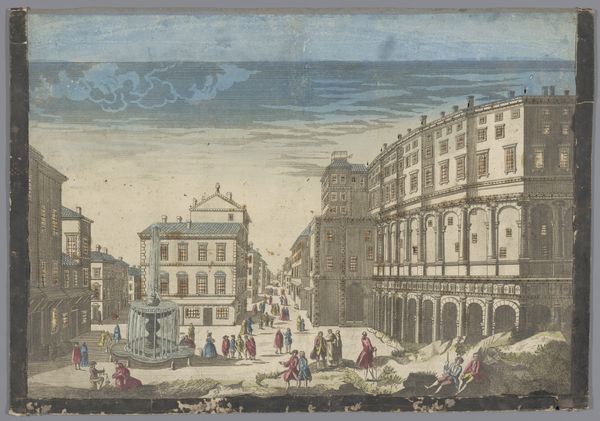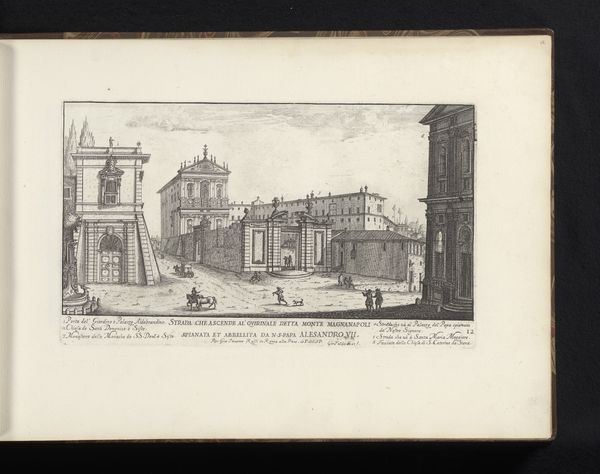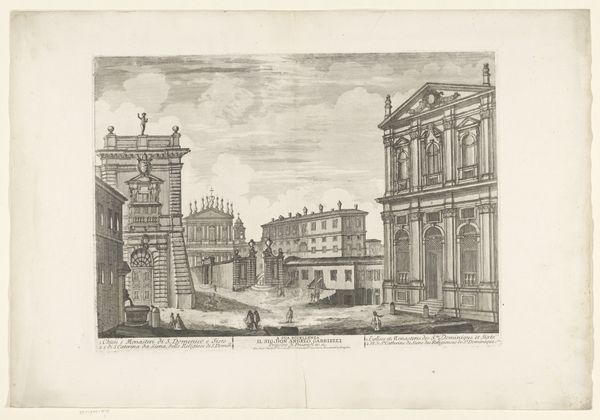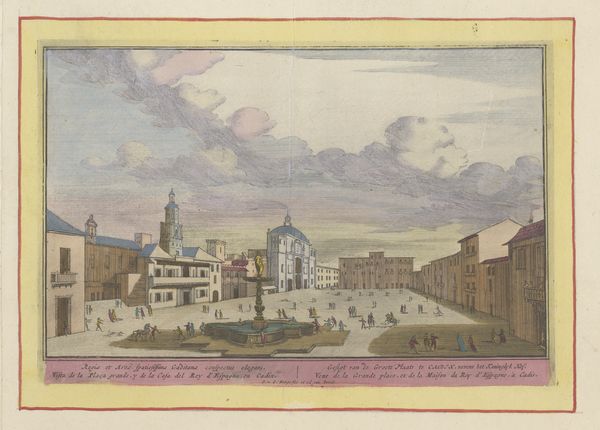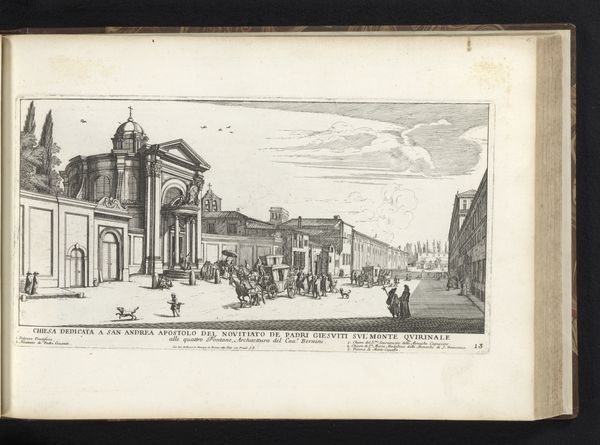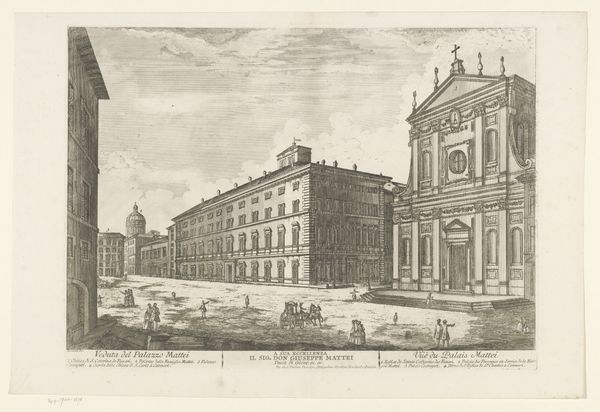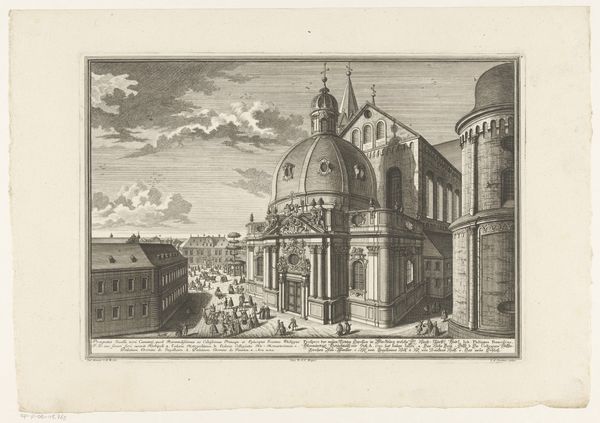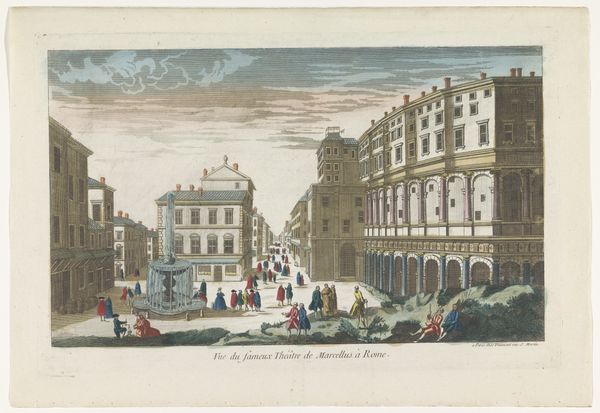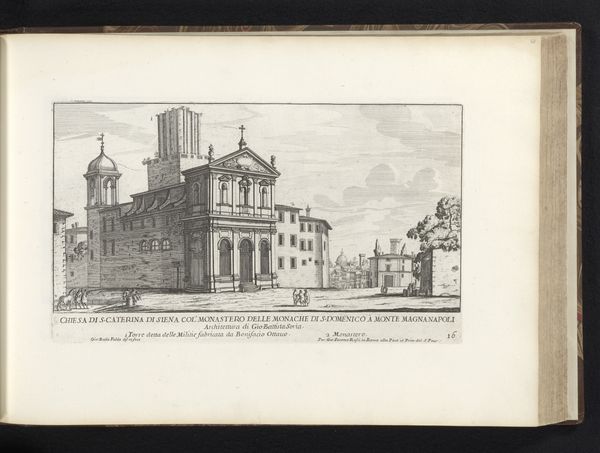
print, etching, engraving
#
baroque
# print
#
etching
#
cityscape
#
watercolour illustration
#
italian-renaissance
#
engraving
Dimensions: height 192 mm, width 293 mm
Copyright: Rijks Museum: Open Domain
Editor: So, this print, "Gezicht op de San Luigi dei Francesi, te Rome," likely made between 1708 and 1756, shows a cityscape with this grand church. It's fascinating how detailed the etching and engraving are. What do you make of this particular depiction? Curator: Considering this cityscape through a materialist lens, it's vital to acknowledge the specific process and materials. The copper plate engraving—the labor involved in its production, and the intended consumer market—these things reveal a story about 18th-century society and economy. Do you think this was targeted at wealthy tourists? Editor: I think it likely was intended for tourists looking for a souvenir, due to the multiple languages included on the page. So you are saying the choice of printmaking itself says something about how the art was produced and meant to be consumed, not just the imagery? Curator: Exactly. This isn’t just a scene; it's an object created within a specific system. Look closely at the quality of line, the ink used, the paper stock. What can these material qualities tell us about the printmaker’s workshop and the potential accessibility of the image? The efficiency and relatively lower cost of printmaking made this imagery more democratic, though, in truth, even these could be exclusive depending on the finishing touches. Editor: It's also interesting to think about how many impressions they could make from a single plate. You also need to know about metalworking, paper making and distribution. And someone had to sit there, repeating these prints! Curator: Precisely! This print encourages us to move beyond a simple appreciation of the 'beauty' and inquire into the economic and social relations that brought this image into being, who controlled the production, and whose labor made it possible. The very nature of "Gezicht op de San Luigi dei Francesi, te Rome," existing as a multiple challenges notions around unique art objects. Editor: So it isn’t about the architecture depicted. It's about the entire process of creating and circulating images! It is an interesting way to consider art, viewing this as just another mass produced commodity. Curator: That's the core of it! Considering the societal structures in play when this art was made provides valuable insights that a purely aesthetic appraisal might miss.
Comments
No comments
Be the first to comment and join the conversation on the ultimate creative platform.
